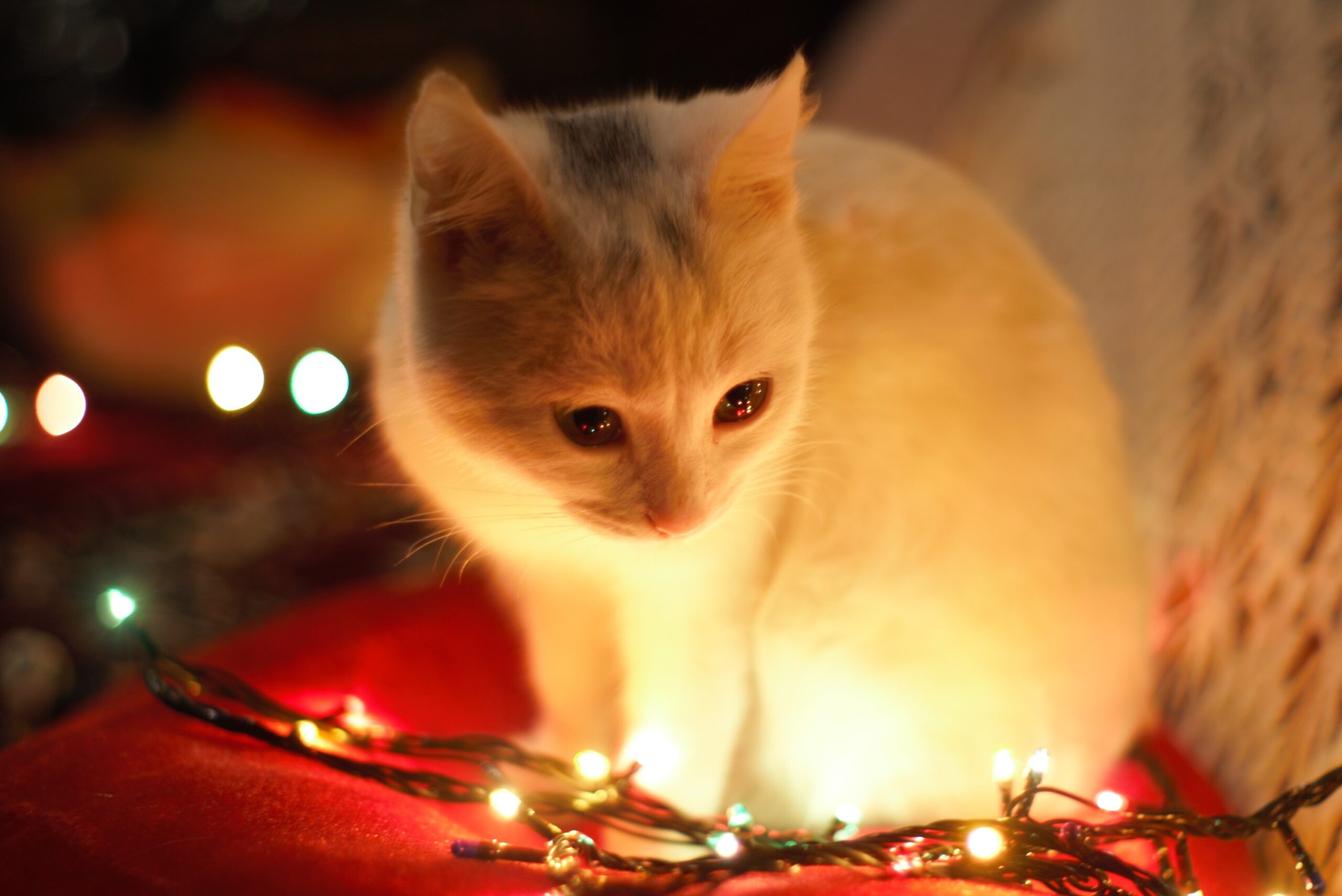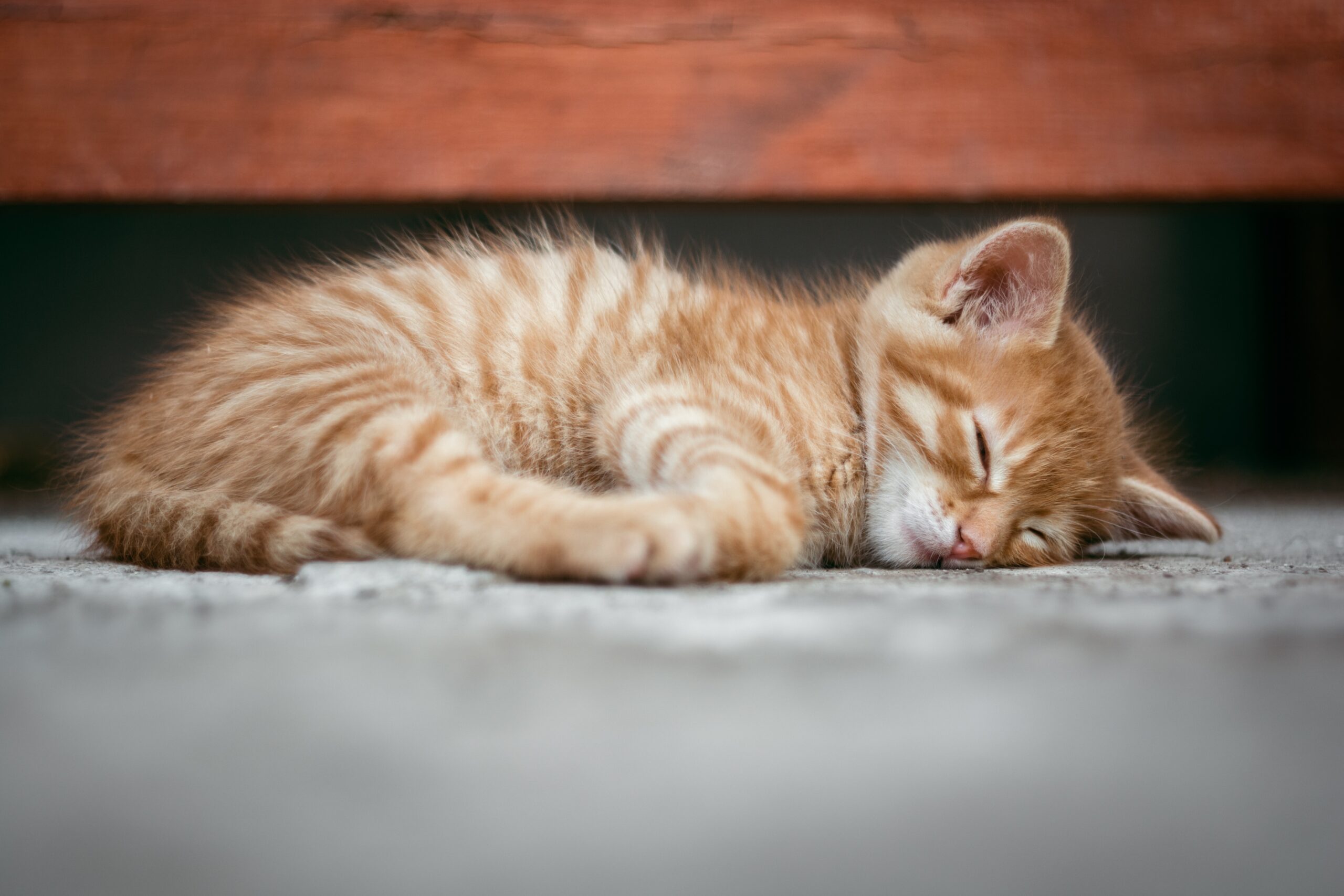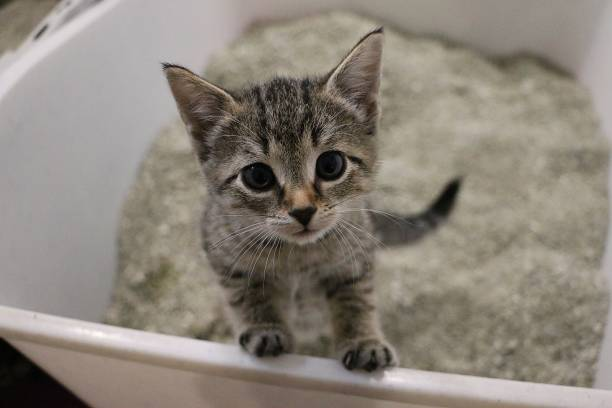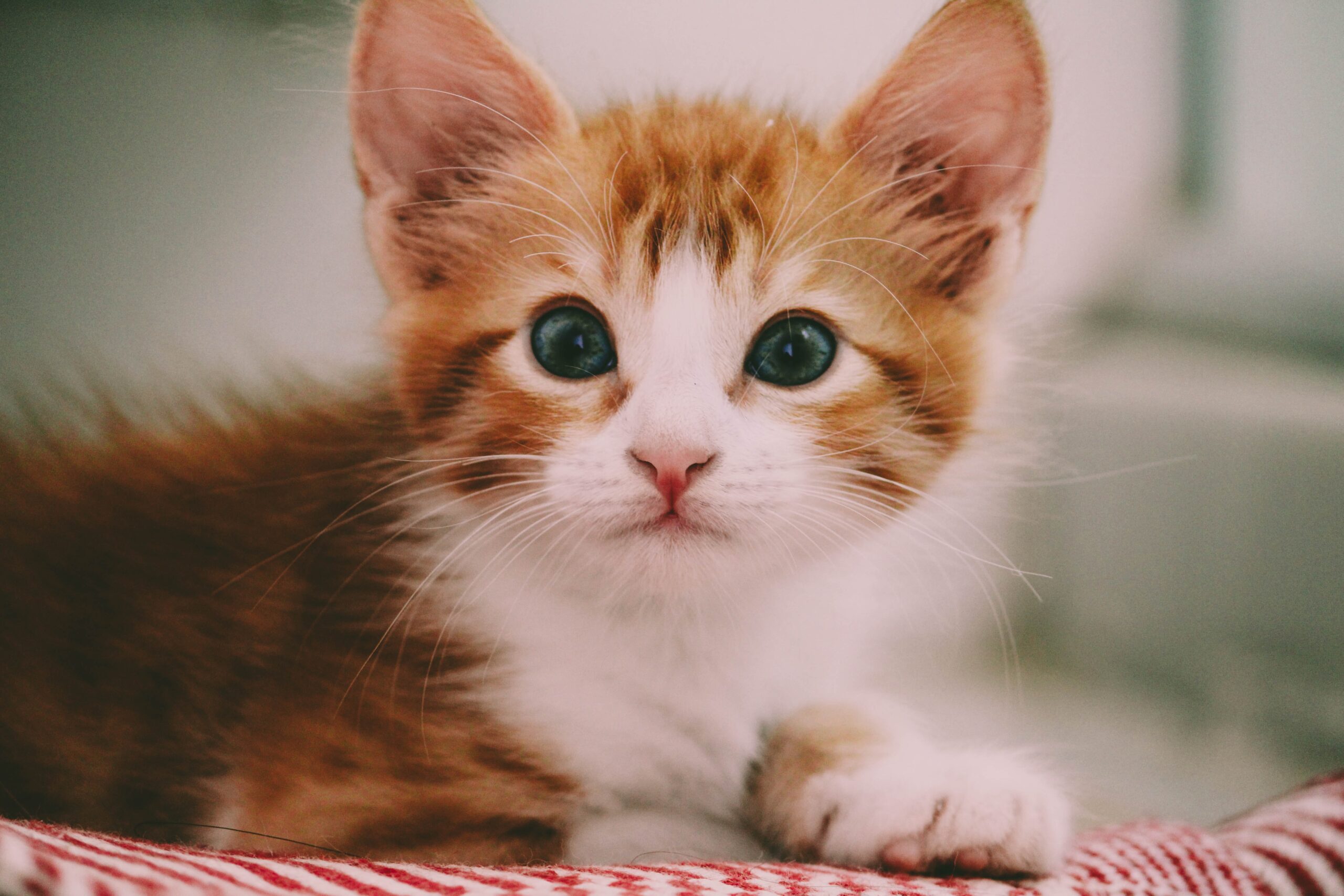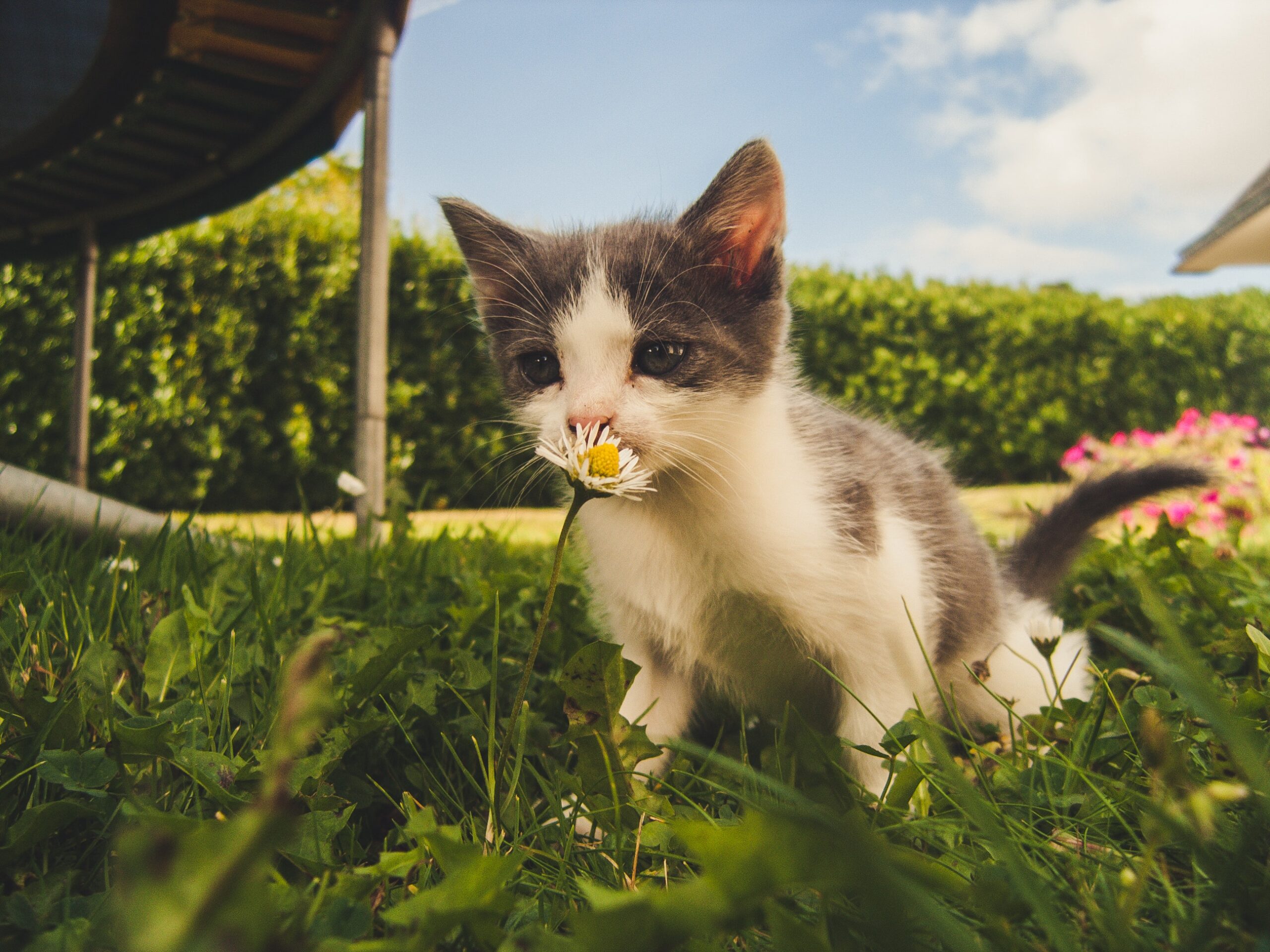Introduction
The Importance of a Stress-Free Environment for Kittens
Bringing a new kitten into your home is an exciting and heartwarming experience. However, amidst the joy, it’s essential to recognize that kittens, like any other living beings, can experience stress. As fragile and sensitive creatures, kittens rely on their environment to shape their early development and emotional well-being. Providing a stress-free environment is not only an act of compassion but also a crucial step in ensuring their long-term health and happiness.
Stress can affect kittens in various ways, just as it does with adult cats and humans. While some level of stress is normal and can be adaptive, excessive or prolonged stress can lead to a range of physical and emotional issues. When exposed to chronic stress during their early stages of life, kittens may develop behavioral problems, compromised immune systems, and even physical ailments.
Understanding the Impact of Stress on Kittens’ Physical and Emotional Well-being
Behavioral Effects: Stress in kittens can manifest as timid or aggressive behavior. A stressed kitten may become withdrawn, hiding away from people and other animals, or display aggressive tendencies like biting and scratching. On the other hand, some kittens may overreact to stimuli, exhibiting hyperactive or anxious behavior.
Immune System Compromise: Stress weakens the immune system, making kittens more susceptible to illnesses and infections. This vulnerability can lead to a higher risk of developing respiratory issues, digestive problems, and other health complications.
Growth and Development: Stress can hinder proper growth and development in kittens. It may negatively impact their cognitive abilities, motor skills, and emotional intelligence, potentially resulting in long-term behavioral challenges.
Bonding and Socialization: Early experiences profoundly shape a kitten’s ability to form bonds and interact with humans and other animals. Stress during this critical period can disrupt socialization, leading to trust issues and difficulties in establishing strong relationships later in life.
Physical Health: Chronic stress can lead to a range of physical health problems in kittens, including weight loss, fur loss, gastrointestinal disturbances, and urinary issues.
By understanding the consequences of stress on kittens’ well-being, we can take proactive measures to create an environment that nurtures their physical and emotional health. In the following sections, we will explore practical tips and strategies to ensure that your adorable feline companion grows up in a stress-free and loving atmosphere.
Setting Up a Safe and Comfortable Space
Choosing an Appropriate Location for the Kitten’s Living Area
When bringing a new kitten home, it’s crucial to choose the right location for their living area. This space should be quiet, calm, and away from high-traffic areas in your home. Avoid places with constant loud noises or intense activities, such as near the television or kitchen. A serene environment will help your kitten feel secure and minimize potential stress triggers.
Creating a Cozy and Secluded Resting Spot
Kittens need a safe and private space where they can retreat when feeling overwhelmed or tired. Providing a cozy and secluded resting spot will give them a sense of security and control over their environment. A cat bed or a soft blanket in a quiet corner will serve as an ideal resting spot. Make sure this area is undisturbed by other pets or young children, allowing the kitten to rest undisturbed.
Providing Essential Resources (Food, Water, Litter Box, Toys, Scratching Posts)
Food and Water: Ensure a steady supply of fresh and clean water, as well as a balanced and age-appropriate kitten food. Place food and water dishes in a location separate from the litter box, as cats prefer these areas to be distinct. Follow a consistent feeding schedule to establish a routine that your kitten can rely on.
Litter Box: A clean and easily accessible litter box is essential for your kitten’s comfort and hygiene. Choose a box with low sides, making it easy for the kitten to enter and exit. Scoop the litter box daily to keep it clean and appealing to the kitten.
Toys: Toys play a significant role in keeping kittens mentally and physically stimulated. Provide a variety of toys, such as interactive toys, balls, feather wands, and small stuffed animals. Rotating toys frequently can maintain the kitten’s interest and prevent boredom.
Scratching Posts: Kittens have a natural instinct to scratch, which helps them keep their claws healthy and mark their territory. To prevent them from scratching furniture or other inappropriate surfaces, provide a sturdy scratching post or pad. Place it near their resting area to encourage regular use.
By carefully setting up the living space with these considerations in mind, you will help your kitten feel secure, comfortable, and well-cared for. A stress-free living area sets the foundation for a content and well-adjusted kitten, allowing them to explore, play, and grow with confidence. In the next section, we will delve into techniques to minimize external stressors that may impact your kitten’s emotional well-being.
Minimizing External Stressors
Reducing Loud Noises and Sudden Movements
Kittens are highly sensitive to loud noises and sudden movements, as their acute hearing and keen senses can make them easily startled. To create a stress-free environment, minimize loud noises in the vicinity of your kitten’s living area. Avoid slamming doors, running vacuum cleaners, or playing loud music near them. Additionally, if you have other pets or children in the house, encourage them to be gentle and calm around the kitten, reducing the risk of startling them unintentionally.
Limiting Exposure to Unfamiliar People and Animals
While socialization is essential for a kitten’s development, it’s essential to introduce them gradually to new people and animals to avoid overwhelming them. During the early stages of adoption, limit the number of visitors to your home and ensure that interactions are calm and positive. This approach allows the kitten to build trust at their own pace, reducing the risk of stress-induced behaviors.
If you have other pets, introduce them to the kitten gradually and under supervision. Use scent swapping by exchanging bedding or toys between the animals to familiarize them with each other’s scent before direct interactions. Always monitor their interactions closely and intervene if any signs of stress or aggression arise.
Managing Household Changes and Disruptions
Kittens can be sensitive to changes in their environment, such as moving to a new home or rearranging furniture. If possible, try to maintain a stable environment during the initial weeks after bringing the kitten home. If unavoidable changes are necessary, keep the kitten’s living area unaffected to provide them with a secure space amid the transitions.
Additionally, kittens can be sensitive to disruptions like loud parties, renovations, or family gatherings. During such events, consider providing a quiet and secluded space for the kitten to retreat to. Filling the area with familiar scents, such as their bedding or toys, can offer comfort during these potentially stressful periods.
By reducing external stressors, you create an environment that promotes your kitten’s emotional well-being and helps them build confidence and trust in their new surroundings. The goal is to establish a harmonious and stable atmosphere, allowing your kitten to develop into a well-adjusted and happy feline companion. In the following section, we will discuss the importance of socialization and gentle handling in nurturing your kitten’s emotional development.
Socialization and Gentle Handling
Gradual and Positive Introduction to Human Interaction
Socialization is a crucial aspect of a kitten’s early development. It involves exposing them to various experiences, people, and environments in a controlled and positive manner. Start by introducing the kitten to immediate family members, allowing them to get used to the presence and scent of each individual. Slowly expand their social circle by inviting close friends over who can interact calmly with the kitten.
Encourage gentle handling during these interactions. Allow the kitten to approach new people at their own pace, and avoid forcing them into uncomfortable situations. Use treats and soothing words to create positive associations with human interaction. Positive reinforcement is essential in building trust and ensuring that the kitten views human contact as a pleasant experience.
Encouraging Play and Bonding with the Kitten
Playtime is not only a fun activity for kittens but also a vital means of bonding and emotional development. Engage in interactive play sessions using toys such as feather wands, interactive puzzles, and laser pointers. These activities mimic natural hunting behaviors and provide mental and physical stimulation for the kitten.
As you play with the kitten, let them initiate and control the pace of the interaction. Be patient and allow them to explore their environment during play. Avoid any rough play or aggressive behavior, as this can lead to fear and stress. Instead, use positive reinforcement and treats to reward desired behaviors during play sessions.
Avoiding Overwhelming or Forceful Handling
Kittens are delicate creatures, and rough or forceful handling can cause them significant distress. Always handle the kitten gently and with care, supporting their body and avoiding sudden movements. Never pick up a kitten by their scruff, as this can be painful and frightening for them.
Children should be supervised closely during interactions with the kitten to ensure that their handling is gentle and appropriate. Teach children to pet the kitten softly and avoid picking them up without adult supervision.
If the kitten shows signs of discomfort or stress during handling, such as hissing, growling, or trying to escape, immediately stop the interaction and allow them to retreat to their safe space. Forcing the kitten to endure uncomfortable handling can erode their trust and confidence.
By providing gradual socialization and gentle handling, you create a positive and nurturing environment for your kitten to thrive. Building trust and positive associations with human interaction enhances their emotional well-being and fosters a deep bond between you and your feline companion. In the next section, we will explore the importance of maintaining a consistent routine in a kitten’s life to further reduce stress and promote their overall well-being.
Maintaining a Consistent Routine
Establishing a Regular Feeding Schedule
Consistency in a kitten’s daily routine provides them with a sense of security and predictability. One of the essential aspects of this routine is establishing a regular feeding schedule. Kittens thrive on routine, and having consistent mealtimes helps regulate their metabolism and promotes healthy eating habits.
Consult with your veterinarian to determine the appropriate portion sizes and frequency of meals based on the kitten’s age, weight, and health condition. Divide their daily food intake into several small meals throughout the day. Stick to the same feeding times, and avoid free-feeding, where food is available all the time. This will prevent overeating and potential weight issues while promoting a structured and stress-free eating routine.
Implementing Predictable Playtime and Rest Periods
Kittens are playful and energetic creatures, but they also need sufficient rest to support their growth and development. Create predictable playtime and rest periods to balance their daily activities.
Engage in interactive play sessions with the kitten at consistent times each day. Playtime not only provides exercise but also fosters bonding and mental stimulation. After play sessions, allow the kitten to have downtime in their cozy resting spot, where they can recharge and relax. This routine helps regulate their energy levels and prevents overstimulation, leading to a happier and more content kitten.
Consistent Approaches to Training and Discipline
Consistency in training and discipline is essential in shaping a kitten’s behavior and setting boundaries. Use positive reinforcement techniques, such as treats and praise, to reward desired behaviors. Be consistent in your responses to their actions to avoid confusion and reduce stress.
Establish clear rules and boundaries for the kitten’s behavior and enforce them consistently. For example, if you do not want the kitten to climb on certain furniture or surfaces, redirect them to an appropriate area, such as a scratching post. Avoid harsh punishments or yelling, as these can lead to fear and anxiety.
Family members should be on the same page when it comes to training and discipline. Consistency across all interactions with the kitten helps them understand what is expected of them and promotes a harmonious and stress-free household.
By maintaining a consistent routine, you create a structured and stable environment for your kitten, which reduces stress and promotes their overall well-being. Kittens thrive on predictability and routine, and these measures will help them feel secure, safe, and loved. In the following section, we will explore the importance of environmental enrichment in providing a stimulating and stress-free life for your feline companion.
Environmental Enrichment
Providing a Variety of Toys to Stimulate Curiosity and Engagement
Environmental enrichment plays a vital role in a kitten’s mental and emotional development. Kittens are naturally curious and playful, and providing them with a variety of toys can keep them engaged and prevent boredom. Offer toys that cater to their different senses, such as toys with textures, sounds, and interactive elements.
Toys like balls, feather wands, and toy mice encourage play and mimic natural hunting behaviors. Rotating toys regularly keeps the environment fresh and exciting for the kitten. Avoid leaving out all toys at once, as this can lead to them losing interest quickly. Instead, introduce new toys periodically to maintain their curiosity and enjoyment.
Using Puzzle Feeders and Interactive Games for Mental Stimulation
Kittens are intelligent animals, and mental stimulation is crucial for their cognitive development. Incorporating puzzle feeders and interactive games into their daily routine can keep their minds active and engaged. Puzzle feeders are toys that dispense food as the kitten interacts with them, encouraging problem-solving and creativity.
Interactive games, such as hiding treats around the house for the kitten to find, engage their hunting instincts and provide mental challenges. These activities not only prevent boredom but also help build confidence and keep stress at bay by providing a productive outlet for their energy.
Offering Vertical Spaces for Climbing and Exploration
Cats, including kittens, have a natural inclination to climb and perch in elevated spaces. Providing vertical spaces, such as cat trees or shelves, allows the kitten to satisfy their climbing instincts and explore their surroundings from a different perspective.
Vertical spaces not only enrich the kitten’s environment but also offer them a safe retreat when they seek alone time or a vantage point to observe the household. These spaces can help reduce stress by providing the kitten with a sense of security and control over their territory.
Ensure that the vertical spaces are stable and securely anchored to prevent any accidents. Additionally, place these areas near windows to provide the kitten with visual stimulation from the outside world, which can further enrich their environment.
By incorporating environmental enrichment into your kitten’s daily life, you create a stimulating and stress-free environment that supports their physical and mental development. These enriching activities and spaces contribute to a well-adjusted and content kitten, paving the way for a happy and fulfilling life together. In the next section, we will explore the importance of monitoring and addressing signs of stress in kittens, along with stress reduction techniques that can benefit their overall well-being.
Monitoring and Addressing Signs of Stress
Recognizing Behavioral and Physical Indicators of Stress
As attentive caregivers, it’s essential to be aware of the behavioral and physical signs that may indicate your kitten is experiencing stress. Recognizing these signs early allows you to address the underlying causes and create a more comfortable environment for them. Some common behavioral indicators of stress in kittens include:
- Excessive hiding or withdrawal from social interactions.
- Aggressive behaviors, such as biting or scratching, even in response to gentle handling.
- Frequent vocalization, including excessive meowing or growling.
- Changes in appetite, such as overeating or loss of interest in food.
- Avoidance of the litter box or inappropriate elimination.
- Excessive grooming leading to fur loss or bald patches.
- Restlessness, pacing, or constant movement.
- Decreased interest in play or interactive activities.
Additionally, there may be physical signs that your kitten is under stress, such as:
- Diarrhea or constipation.
- Vomiting.
- Changes in sleeping patterns, either excessive sleep or insomnia.
- Rapid breathing or panting.
- Changes in body posture, such as hunched back or flattened ears.
- Dilated pupils.
Knowing When to Seek Veterinary Advice
If you notice any of the above signs persisting or worsening, it’s essential to seek veterinary advice promptly. Stress can have significant impacts on a kitten’s health, and early intervention is crucial in preventing further complications. Your veterinarian can perform a thorough examination, rule out any underlying medical conditions, and provide guidance on stress reduction strategies specific to your kitten’s needs.
Employing Stress Reduction Techniques (e.g., Pheromone Diffusers)
To create a stress-free environment for your kitten, consider using stress reduction techniques. One effective method is the use of pheromone diffusers, such as Feliway®. These diffusers release synthetic feline facial pheromones that mimic the natural scents cats use to mark their territory as safe and secure. The pheromones have a calming effect on cats and can help alleviate stress and anxiety.
Other stress reduction techniques include providing a designated safe space for the kitten, as mentioned earlier, and using calming music or white noise to mask potentially disturbing sounds.
In extreme cases of stress or anxiety, your veterinarian may recommend medications or supplements specifically formulated for managing feline stress. However, these should only be used under professional guidance.
By monitoring your kitten’s behavior and physical well-being and employing stress reduction techniques when necessary, you can create an environment that supports their emotional health and overall well-being. A stress-free kitten is more likely to develop into a well-adjusted and happy adult cat, enriching your life with their affection and companionship.
Handling Changes and Transitions
Preparing for Changes such as Moving Homes or Introducing New Pets
Kittens can be particularly sensitive to changes in their environment, and major life transitions can be overwhelming for them. Whether you’re moving to a new home or introducing a new pet to the household, thoughtful preparation is essential to ease the transition and minimize stress.
Moving Homes: Before moving, create a safe and comfortable space for the kitten in the new home. Set up their familiar belongings, such as bedding, toys, and scratching posts, to provide a sense of familiarity. During the move itself, keep the kitten in a secure carrier or a separate room to shield them from the chaos. Once you arrive at the new home, gradually introduce them to each room while providing reassurance and positive reinforcement.
Introducing New Pets: When introducing a new pet, allow them to get acquainted gradually. Begin with scent swapping, where you exchange bedding or toys between the pets, so they become familiar with each other’s scent. Next, allow the pets to see each other through a barrier, such as a baby gate or cracked door, to gauge their reactions. Supervised face-to-face interactions should follow, ensuring both animals feel safe and secure during the process.
Gradually Acclimating the Kitten to New Environments and Situations
Changes and new situations can be intimidating for kittens, but with gradual acclimation, they can learn to adapt more easily.
Slow Introductions: When introducing your kitten to new environments, start with one room at a time, allowing them to explore at their own pace. As they become comfortable, gradually expand their access to other areas of the house.
New People and Visitors: When welcoming new people or visitors, allow the kitten to approach them on their own terms. Encourage guests to avoid sudden movements or loud noises and offer treats or toys as a positive reinforcement during initial interactions.
Veterinary Visits: Veterinary visits can be stressful for kittens. To ease the experience, use a comfortable carrier and line it with familiar bedding. Offer treats or toys to create a positive association with the carrier. Additionally, schedule regular “happy visits” to the vet clinic, where the kitten receives treats and affection without undergoing any procedures, to make the clinic a less intimidating place.
Handling and Grooming: Gradually acclimate the kitten to handling and grooming. Start with short and gentle sessions, gradually increasing the duration as the kitten becomes more comfortable. Be patient and use positive reinforcement to build trust and confidence.
By preparing and gradually introducing changes and new situations, you can minimize stress for your kitten and help them adapt to their evolving environment with confidence. Your thoughtful approach to transitions will foster a secure and resilient feline companion, capable of facing life’s changes with ease.
The Role of Diet and Nutrition
Choosing High-Quality Kitten Food for Optimal Health
Providing your kitten with a balanced and nutritious diet is crucial for their overall health and well-being. Kittens have unique nutritional requirements during their early stages of development, and choosing high-quality kitten food is essential to support their growth and immune system.
Opt for commercially available kitten food that is specifically formulated for their age and life stage. Look for products that contain essential nutrients such as protein, fats, carbohydrates, vitamins, and minerals. Ideally, the first ingredient should be a high-quality source of animal protein, as this is crucial for a growing kitten’s muscle development and energy needs.
Avoid feeding your kitten a diet designed for adult cats, as it may not meet their specific nutritional requirements. Additionally, resist the temptation to feed them a homemade diet without consulting a veterinarian or feline nutritionist, as it can lead to imbalances and deficiencies.
The Link between Diet and Stress Reduction
Believe it or not, a kitten’s diet can have an impact on their stress levels. Proper nutrition contributes to a healthy immune system and can help the kitten better cope with stressful situations. Some nutrients, such as omega-3 fatty acids, have been shown to have a positive effect on mood and behavior in cats.
Ensuring that your kitten receives all the necessary nutrients in the right amounts can promote a balanced temperament and reduce the likelihood of stress-induced behaviors. A diet that meets their nutritional needs will keep them healthy, content, and better equipped to handle changes in their environment.
Monitoring Portion Sizes and Maintaining a Healthy Weight
Just like in humans, obesity in cats can lead to numerous health issues, including stress-related problems. Monitoring portion sizes and maintaining a healthy weight is crucial to your kitten’s long-term health and well-being.
Follow the feeding guidelines provided by the kitten food manufacturer and adjust portion sizes based on your kitten’s age, weight, and activity level. Overfeeding can lead to weight gain, while underfeeding can result in nutritional deficiencies and growth problems.
Regular weigh-ins and body condition assessments can help you track your kitten’s growth and ensure they maintain a healthy weight. If you are unsure about the appropriate portion sizes or if you suspect your kitten is overweight or underweight, consult with your veterinarian for personalized feeding recommendations.
By providing a well-balanced diet that meets your kitten’s nutritional needs, you support their physical health and emotional well-being. Proper nutrition, coupled with a stress-free environment, sets the foundation for a happy and healthy feline companion that will bring joy to your life for years to come.
Conclusion
The Lifelong Benefits of a Stress-Free Kittenhood
As we’ve explored throughout this article, providing a stress-free environment for kittens is of utmost importance for their physical and emotional well-being. A stress-free kittenhood sets the stage for a healthier and happier adult cat. By minimizing external stressors, implementing consistent routines, and offering enriching experiences, we can help our feline companions develop into confident, well-adjusted, and content cats.
A stress-free kittenhood also lays the foundation for a long and fulfilling life. Kittens who grow up in nurturing and supportive environments are more likely to have robust immune systems, better behavior, and stronger social skills. Their positive early experiences can influence their entire life, allowing them to face challenges and changes with greater resilience.
The Rewarding Experience of Raising a Content and Well-Adjusted Feline Companion
Creating a stress-free environment for your kitten is not only beneficial for them but also immensely rewarding for you as their caregiver. The bond that forms during their early development is special and enduring. A content and well-adjusted feline companion will bring joy, comfort, and affection to your life for years to come.
The journey of raising a kitten involves patience, understanding, and dedication. Witnessing their growth, playfulness, and affectionate nature is a source of immeasurable joy. Knowing that you’ve provided a safe and loving home for them, where they can thrive and be their true selves, is a deeply gratifying experience.
In conclusion, by embracing the principles of a stress-free environment, such as providing a safe and comfortable living space, minimizing external stressors, promoting socialization and gentle handling, maintaining a consistent routine, enriching their environment, monitoring their well-being, and offering a balanced diet, you lay the groundwork for a harmonious and fulfilling relationship with your feline companion.
As they journey through life with your unwavering love and care, you will be rewarded with the boundless affection and companionship of a content and well-adjusted feline friend—a true testament to the power of a stress-free kittenhood and the joys of responsible pet ownership.






